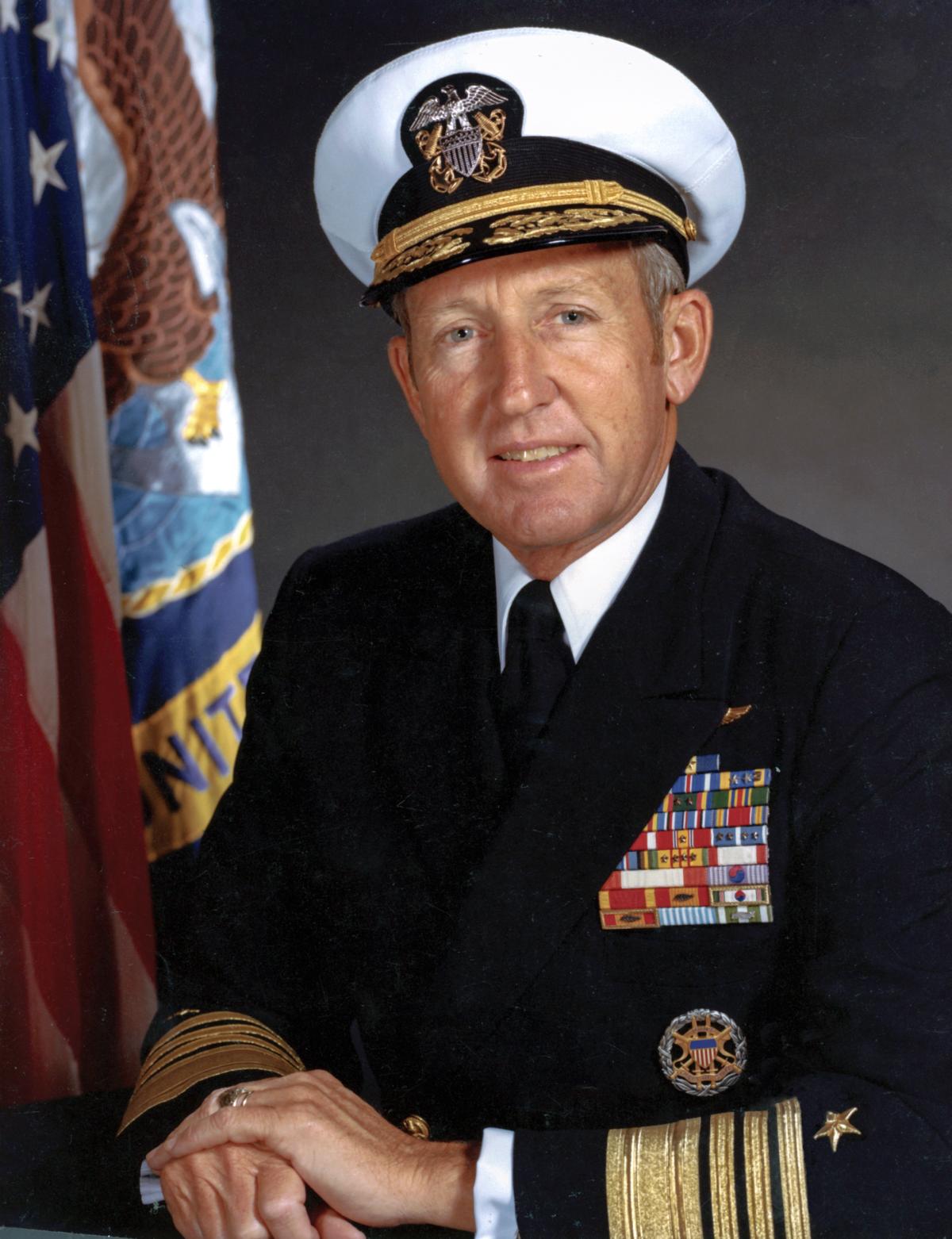When the Falklands War began on 2 April 1982 (see “Argentina’s Gray Zone Gambit,” p. 44–51), Chief of Naval Operations (CNO) Admiral Thomas B. Hayward found himself in a unique position—he happened to be in the Argentine capital as the fighting commenced. Here, from his U.S. Naval Institute oral history, is his firsthand account:
The U.S. Navy’s role in the Falklands War was truly minimal. My own role was kind of interesting. I was in Buenos Aires the day of the invasion of the islands by the Argentines.
The U.S. had had years of difficulties, foreign policy–wise, with the leadership in Argentina but finally decided that it was time for an official visit. A useful way to initiate improvement, in most cases, was military-to-military, and the Navy is very often used as that tool. So a trip was arranged for me to tour around South America on official visits, to include a stop in Buenos Aires, with two or three days with their navy chief.
An interesting twist in trying to put that schedule together was that the Argentines were being really overbearing about my visit being at a very specific time. But it just didn’t fit the schedule of where else I had to go. I eventually told the schedulers: “Drop them out. We can’t adjust to it, and if they can’t move it a few days, then let’s cut them out.” Well, that rippled rapidly back through the system, and they adjusted their schedule to meet my availability.
So I went to Chile ahead of Argentina and then flew on over to Buenos Aires. Made official calls during the day to the Argentine CNO, and went over and met General Leopoldo Galtieri, the de facto president at the time. The fascinating part about that was I had talked to him about the tension over South Georgia Island. It had already bubbled way up. I remember making a comment to him that “Well, whatever you do, don’t do anything foolish like putting troops ashore somewhere else.”
As we walked out, got in the car, and were driving away, our naval attaché says: “Something’s going on. I’ve never seen Galtieri so nervous. He’s such a poised, in-charge kind of guy. Did you notice how his foot was going constantly?”
I said, “No, I didn’t.”
He said, “Well, something is going on.”
A lot of body language there. So we passed that on to the ambassador later that afternoon. In the evening there was a big formal reception with dress whites, lots of brass. The Argentine CNO and I toasted our countries, said great things about how good it was that we were working together again. At that very moment, they were landing in the Falklands. An interesting part of it is, I am confident that less than half of his officers knew that. Well, I didn’t know it either, at the time, of course.
The party went on and on, until 1:00 in the morning or so. My wife and I were sleeping in the ambassador’s home. About 4:00 or 5:00 in the morning I got a knock on the bedroom door. It was the ambassador. And he said, “We just had word that the Argentines have landed on the Falklands.” Holy smoke! So the two of us went and listened to the latest intelligence and tried to figure out what was going on. I said: “Well, that’s the end of my trip. We’re leaving.” And we did; we left in the early morning—two or three days earlier than expected. I hadn’t been there 24 hours.
Somehow, the word came that the Argentine CNO wanted to see me. Would I please come over to his office, and he’d try to explain what was going on? I foolishly agreed, because I thought I would get some intelligence out of that—find out the details. Because we didn’t really know; we just knew it was a bad deal. But maybe there was justification for it. Who knows?
So I went over to his office. I didn’t stay there very long. He tried to explain why their country had to do this. They were looking forward to U.S. government support. He gave me their rationale, which I found totally unpersuasive.
I told the admiral I was leaving. After trying his best to dissuade me, he said: “I’ll meet you out at the airport. I want to give you an official sendoff.”
I said: “I don’t want any sendoff, at all. What you’ve done has breached the whole purpose of this trip down here and the meeting. I don’t want any bands or any of that stuff.” When I got out to the airport, he was already there with half-a-dozen of his officers and their wives, laden down with bouquets, side boys and all. My wife reminds me of my walking around the side boys. No honors.



